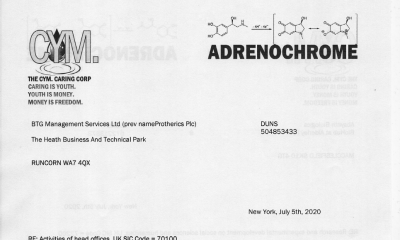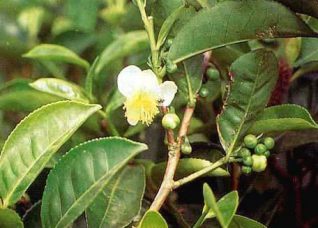Sabu M Chacko, 1Priya T Thambi,1Ramadasan Kuttan,2 and Ikuo Nishigaki1
1Priya T Thambi,1Ramadasan Kuttan,2 and Ikuo Nishigaki1
Abstract
The health benefits of green tea for a wide variety of ailments, including different types of cancer, heart disease, and liver disease, were reported. Many of these beneficial effects of green tea are related to its catechin, particularly (-)-epigallocatechin-3-gallate, content. There is evidence from in vitro and animal studies on the underlying mechanisms of green tea catechins and their biological actions. There are also human studies on using green tea catechins to treat metabolic syndrome, such as obesity, type II diabetes, and cardiovascular risk factors.
Long-term consumption of tea catechins could be beneficial against high-fat diet-induced obesity and type II diabetes and could reduce the risk of coronary disease. Further research that conforms to international standards should be performed to monitor the pharmacological and clinical effects of green tea and to elucidate its mechanisms of action.
Go to:
Background
In recent years, the health benefits [1] of consuming green tea, including the prevention of cancer [2] and cardiovascular diseases [3], the anti-inflammatory [4], antiarthritic [5], antibacterial [6], antiangiogenic [7], antioxidative [8], antiviral [9], neuroprotective [10], and cholesterol-lowering effects [11] of green tea and isolated green tea constituents are under investigation. However, adding green tea to the diet may cause other serious health concerns.
The health-promoting effects of green tea are mainly attributed to its polyphenol content [12], particularly flavanols and flavonols, which represent 30% of fresh leaf dry weight [1]. Recently, many of the aforementioned beneficial effects of green tea were attributed to its most abundant catechin, (-)-epigallocatechin-3-gallate (EGCG) [13–15]. Green tea extracts are more stable than pure epigallocatechin gallate, one of the major constituents of green tea, because of the presence of other antioxidant constituents in the extract [8]. In general, herbal medicines are complex mixtures of different compounds that often act in a synergistic fashion to exert their full beneficial effect [11]. However, relatively few herbal medicines have been well characterized and their efficacy demonstrated in systematic clinical trials as compared to Western drugs. This review article highlights the recent research on the efficacy, action mechanisms, and side effects of green tea and its catechins in in vitro, in vivo, and ex vivo systems [16].
The review on green tea and its catechins focused on language literature in English. The literature search was conducted in the following databases: Pubmed (1980-2009), EMBASE (1980-2009), Allied and complementary Medicine Database (AMED, 1985-2009) and China Journals Full Text Database (1975-2009). The keywords used were selected from the following terms: green tea, catechins, anticancer, diabetes, polyphenols, in vivo studies, general pharmacology and toxicology. The health benefits and adverse effects of green tea and its catechins were reviewed.
The authors read full articles and reached consensus after discussion. Articles included in the study covered the following effects of green tea: (1) the health benefits in humans and animals, (2) absorption of metal ions and drug-metabolizing enzymes, (3) antioxidation and inhibition of oxidative stress, (4) carbohydrate metabolism and diabetes mellitus, and (5) adverse effects. A total of 105 peer-reviewed papers in English were selected for this review.
Green tea
Tea is one of the most popular beverages consumed worldwide. Tea, from the plant Camellia sinensis, is consumed in different parts of the world as green, black, or Oolong tea. Among all of these, however, the most significant effects on human health have been observed with the consumption of green tea [17]. The first green tea was exported from India to Japan during the 17th century. It is estimated that about 2.5 million tons of tea leaves are produced each year throughout the world, with 20% produced as green tea, which is mainly consumed in Asia, some parts of North Africa, the United States, and Europe [18]. The association between tea consumption, especially green tea, and human health has long been appreciated [19,20]. Green tea and black tea are processed differently during manufacturing. To produce green tea, freshly harvested leaves are immediately steamed to prevent fermentation, yielding a dry, stable product. This steaming process destroys the enzymes responsible for breaking down the color pigments in the leaves and allows the tea to maintain its green color during the subsequent rolling and drying processes. These processes preserve natural polyphenols with respect to the health-promoting properties. As green tea is fermented to Oolong and then to black tea, polyphenol compounds (catechins) in green tea are dimerized to form a variety of theaflavins, such that these teas may have different biological activities.
Reference:
https://www.ncbi.nlm.nih.gov/pmc/articles/PMC2855614/


 Alternative Health2 years ago
Alternative Health2 years ago
 Life Force Network2 years ago
Life Force Network2 years ago
 Alternative Health1 year ago
Alternative Health1 year ago
 Life Force Network2 years ago
Life Force Network2 years ago
 Alternative Health2 years ago
Alternative Health2 years ago
 Military2 years ago
Military2 years ago
 1
1


















